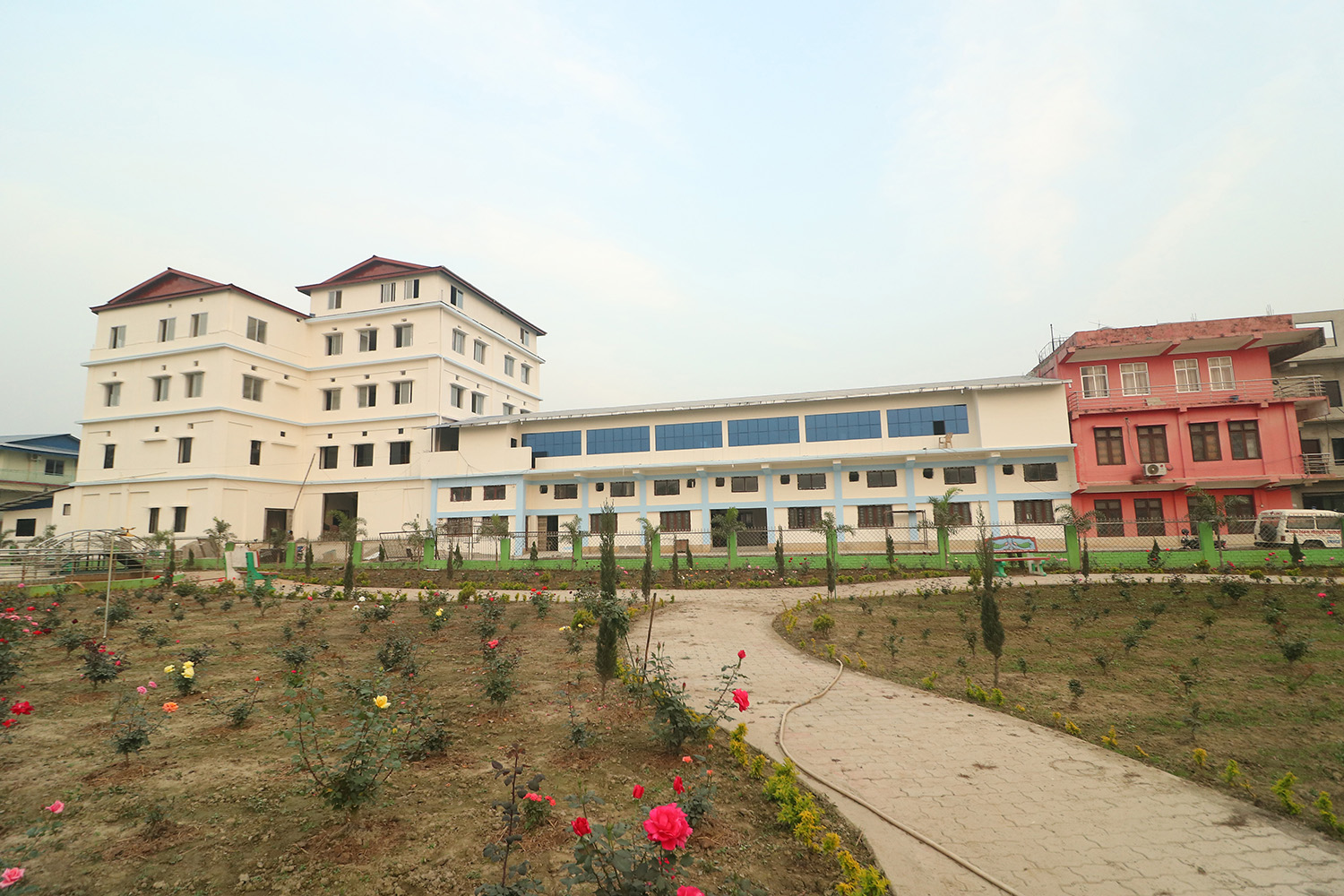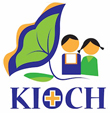
KATHMANDU INSTITUTE OFCHILD HEALTH (KIOCH)
KIOCH-Damak Children’s Hospital
Damak Nagarpalika, Ward No. 7, Red Cross Complex, Jhapa, Koshi Province, Nepal
PROJECT INTRODUCTION

www.kioch.org.np damak@kioch.org.np
+977-23-570602

KIOCH [Kathmandu Institute of Child Health] is a not-for-profit organization established in 2017. It aims to deliver integrated multispecialty high-quality child healthcare that is affordable, accessible, and available to all, thus advancing Quality of Life of Children in Nepal. KIOCH focuses on providing solutions to ever rising healthcare needs and consistent poor health outcomes for millions of children in Nepal. It believes on timely adaptation of scientific medical advances, technologies and valued people-centered care that are of international standards. KIOCH also works on finding ways to prevent and control communicable and non-commnicable diseases among children.
KIOCH is led by a group of professionals actively engaged in social welfare and well- being of people. The team comprises of diverse expertise with proven leadership in the field of medical science, social welfare, social enterprise, public communication, and community empowerment, among others. (See Board Members in annex 2)
A high time to focus on high-quality integrated multispecialty childcare hospital in Nepal:
- Almost 25% of the population in Nepal lives in poverty. Over 40% of Nepal’s population is below the age of 18 years, which amounts to almost 12 million children.
- Nepal has very high Neonatal, Infant, Under Five Children Mortality Rate of 18, 25 and 28 per thousand respectively1.
- Disparities in health outcomes by gender, ethnicity, and geographical location exist. Accelerated efforts needed to ensure equitable healthcare considering poor, urban poor, and people from remote areas and marginalized groups.
- While Nepal has a network of 4,118 health facilities in public sector, and over 350 private sector health facilities, addressing demands for quality child healthcare is overly challenging with only one dedicated children’s hospital in public sector which is often overwhelmed.
- Ensuring constitutional mandate of ‘access to basic healthcare services as a fundamental right of the people’ calls for a viable partnership between state and non- state sectors in federal context.
- Current evidence shows that many causes of deaths among children could be averted, if the child is able to access specialized healthcare in time. However, there are only a few children hospitals and just less than 3000 pediatric beds in the country for 12 million children in Nepal.
HUB-AND-SPOKE MODEL: KIOCH will begin accomplishing its aim by establishing a multi-specialty childcare hospital (hub) in the nation’s capital,
Kathmandu. Next, the KIOCH “spokes” or satellite centers will be established in strategic locations, at least one in each province. These spokes will act as gateways that channel patients to the main hub in Kathmandu, with coordinated and phased manner. The ultimate goal is to create a child healthcare network that supports the needed specialties. Gradually, satellite centers will be built out to be able to provide more advanced care. In summary, the hub-and-spoke configuration suits the geographical challenges and economic conditions of Nepal and will make it possible for pediatric specialty care to be more available, accessible, and affordable. Together with the care delivery, KIOCH work with the government and other stakeholders on prevention and control of communicable and non-communicable diseases.
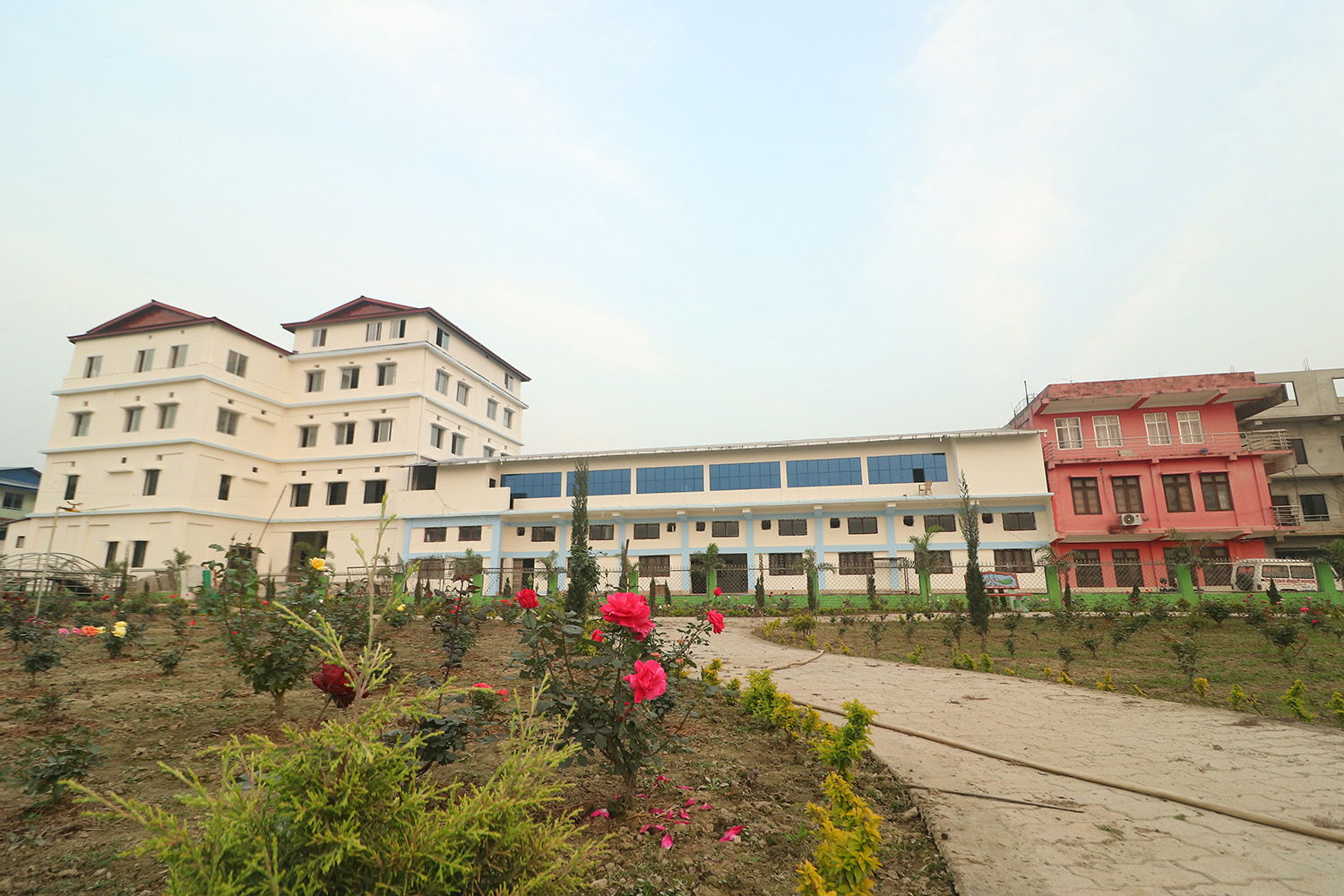
KIOCH-Damak Children’s Hospital Building
Construction of the main building in Kathmandu is underway. The government of Nepal has provided adequate land in Kathmandu for this purpose. KIOCH will also have partnership with Government, local municipalities, corporate houses and individuals in construction and operations of the hospital.
Koshi province Project:
According to the 2021 census, there are around 4.96 million people in the Koshi province, with a population density of 192 per square kilometer. Damak is one of the important cities of Jhapa District. The current population of Jhapa is 998,054 (census 2021) and the average population density is around 621 people per square km. Jhapa adjoins two other big districts of Nepal, namely Morang and Ilam. It also serves as the gateway for Pachthar and Taplejung, two northern districts of province One. The total direct catchment population for the Damak Children’s Hospital is around 2 million population with approximately 900,000 children..
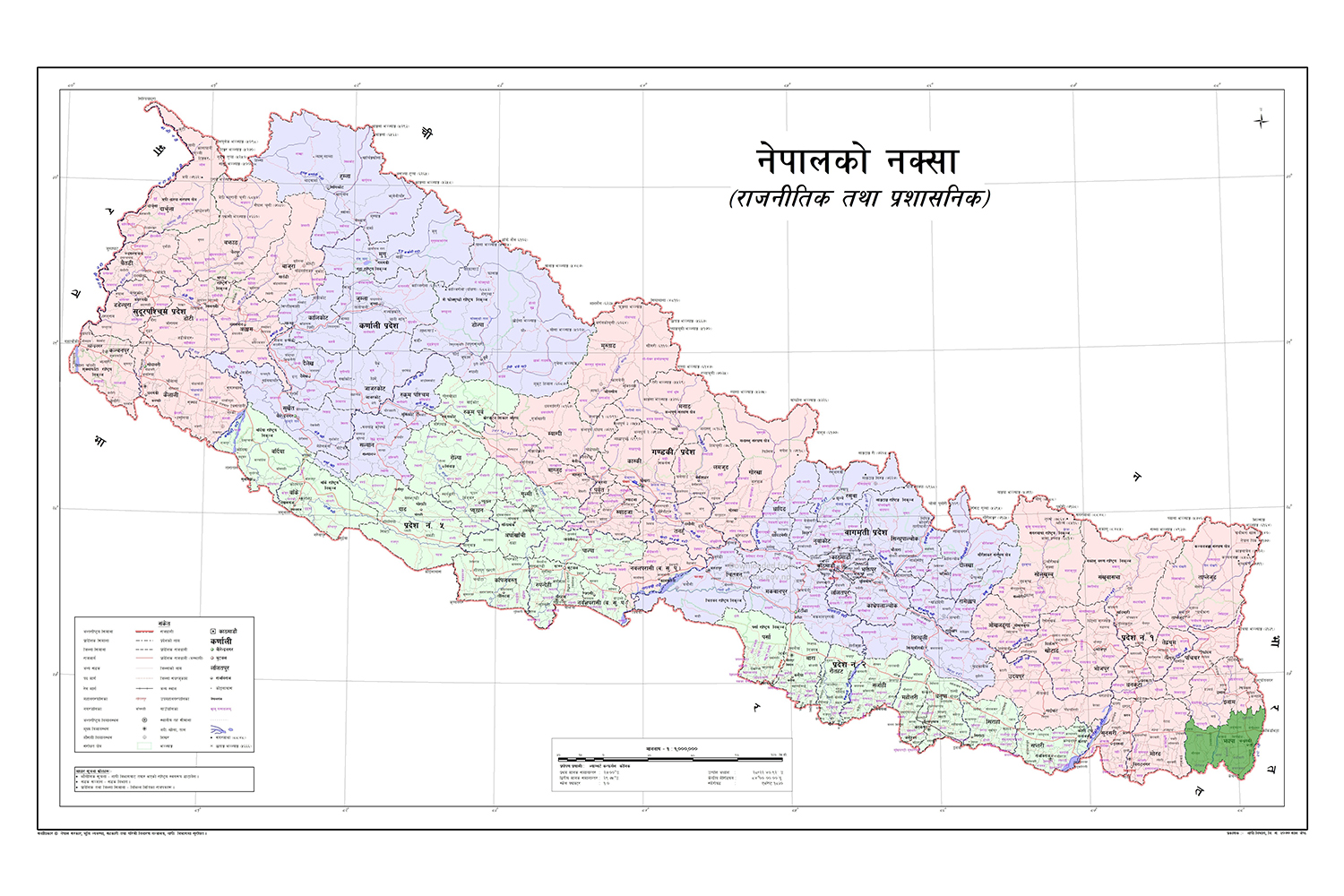
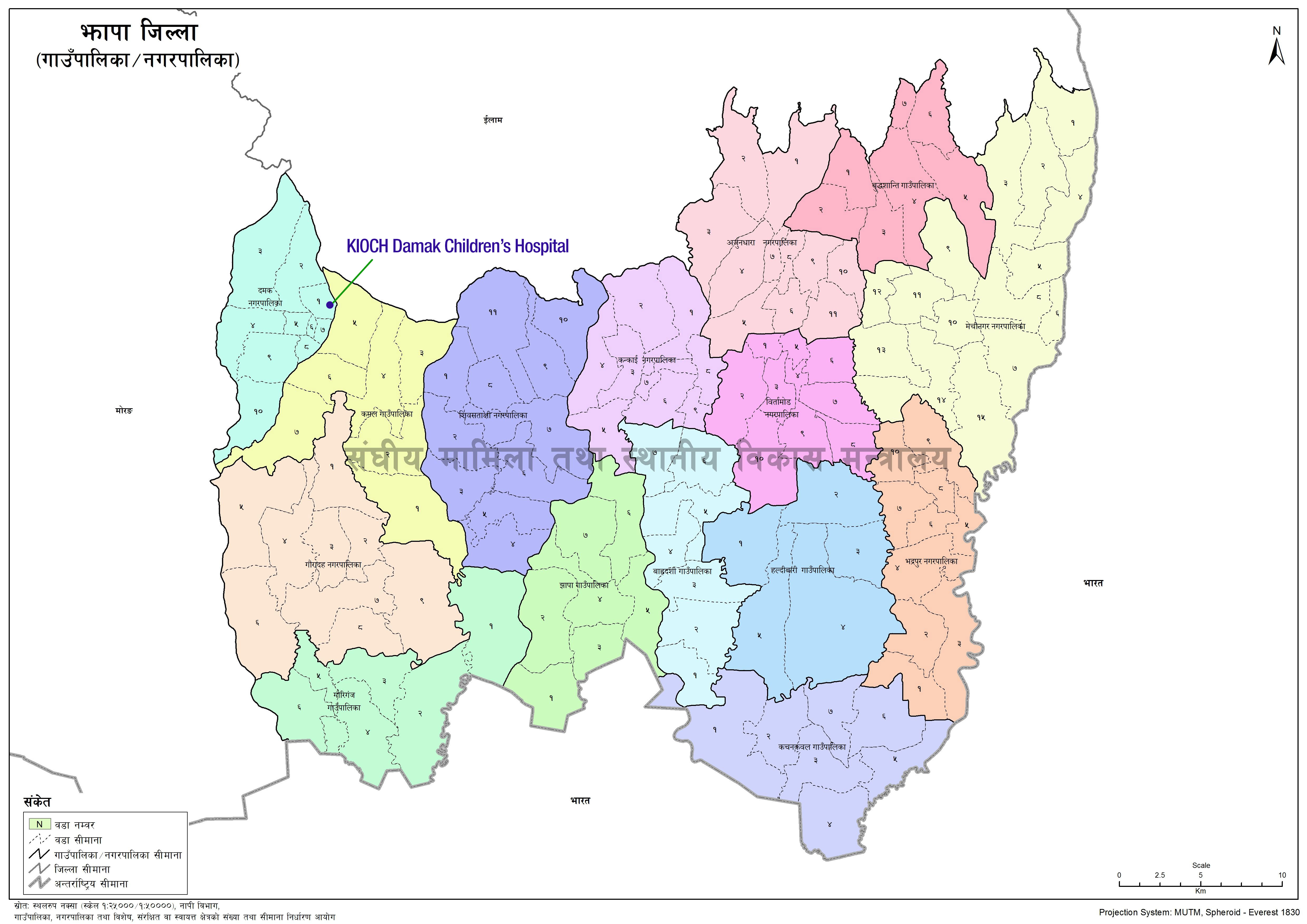
The first satellite hospital, KIOCH-Damak Children’s Hospital is now in operation. This was made possible by initiative of Redcross Damak, local municipality, generous donations from individuals, corporate houses and provincial government.
The following services are provided from KIOCH-Damak Children’s Hospital at Damak, Jhapa:
All general pediatric care, pediatric emergencies, neonatal critical care, pediatric critical care, and selected sub-specialty pediatric care, including special care to children with hearing impairment will be provided by this hospital. The medical team is formed including Consultant pediatricians, Registrars, Medical Officers and other health care workers in nursing unit, pharmacy, radiology and laboratory.
The following facilities are established at the KIOCH Damak Children’s hospital:
| Service/ Unit | Bed |
| Emergency beds | 10 |
| NICU | 10 |
| PICU | 6 |
| IPD General beds 26 + Cabin beds 7 | 33 |
| Operating Room | 1 |
| OPD clinics | 5 |
| Laboratory:(hematology, biochemistry, microbiology, parasitology) | |
| Radiology: X-ray, ultrasound, Echocardiography, Doppler study | |
| Service Units: Oxygen manifold, vacuum, Water treatment plant, Laundry, HVAC | |
| Total Beds: | 50 + |
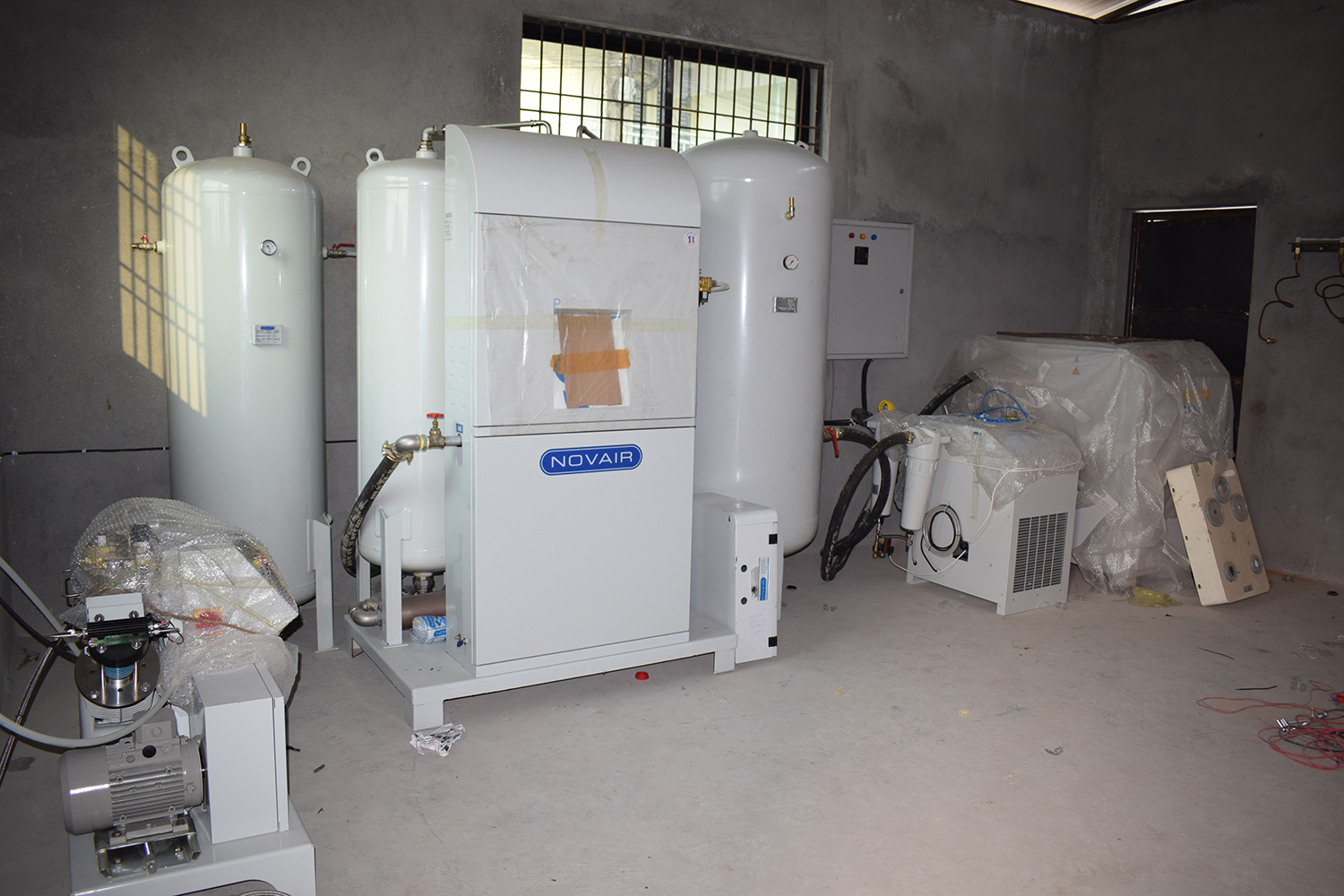
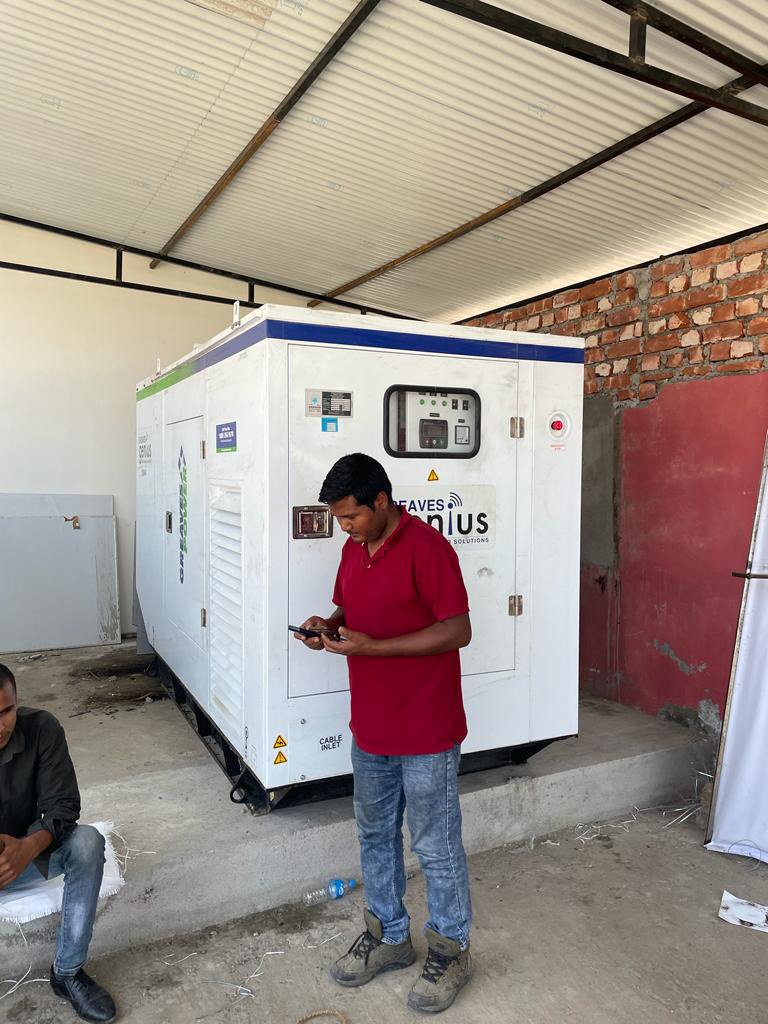
Oxygen Plant Auto Switching Generator Set
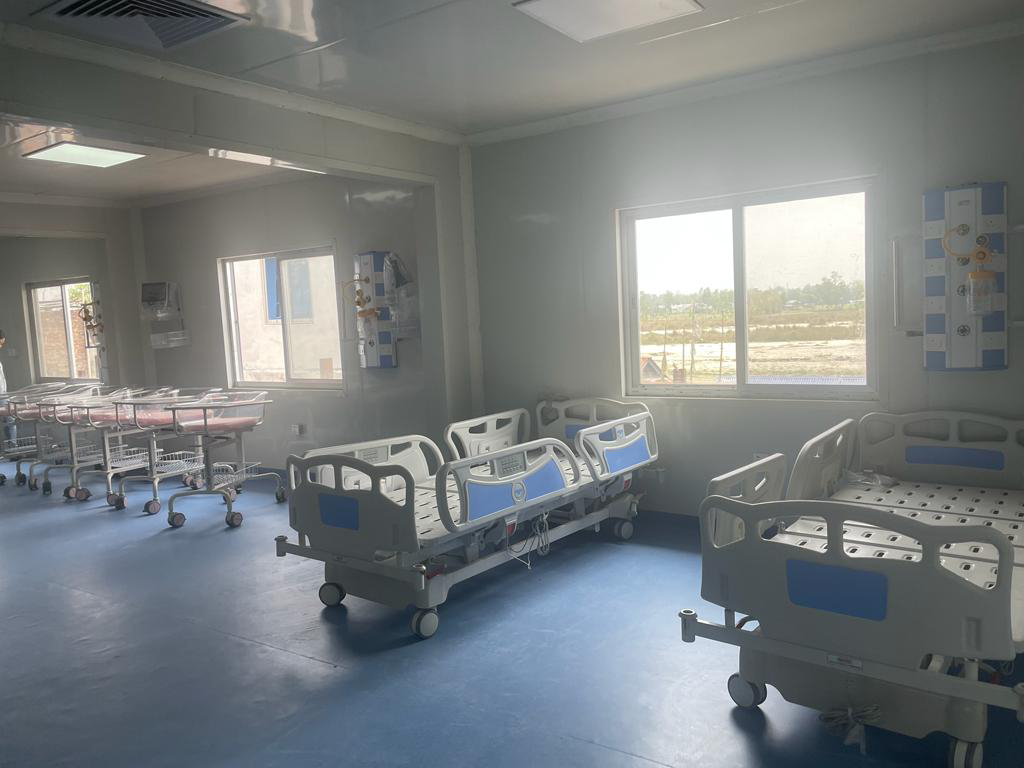
PICU with PUF panel wall and Vinyl flooring
The existing building is built as per the building code of Nepal. It required Renovation, retrofitting, customization of the building and installation of the support system including oxygen plant, self switching power backup, ramp from the ground floor to the ICU and Operation Theatre and Lift. Neonatal Intensive Care Unit (NICU) and Pediatric Intensive Care Unit (PICU) are state of the art facilities. They are all finished with seamless PUF panel, antibacterial vinyl flooring and air conditioning with HEPA filters. Modern laboratory and equipment including x-ray, ultrasound are installed. The hospital has started its operation with the aim to provide high quality Pediatric care in the region. Hospital will also work with Red-cross to upgrade the services and quality of the blood bank.
Summary:
With an almost twelve million children’s population in Nepal, there is an urgent need for concentrated efforts in making high-quality child healthcare available, accessible, and affordable. KIOCH aims to be the leading institution for delivery of healthcare for children in Nepal and set an example of child centered care. KIOCH puts forward a new approach of coordinated care to maximize child health outcomes and quality of life. This project is an investment in the future health of our country, the children of Nepal.
Contact: Kathmandu Institute of Child Health (KIOCH) www.kioch.org.np Bhagawan Koirala, Chairman koiralabhagawan@gmail.com
Dipendra Khadka, dipendra@kioch.org.np
Mandar Shikhar Banerjee, mandarshikhar@kioch.org.np Monika Acharya, monika@kioch.org.np
Annex 2. Current Board of Directors of KIOCH
- Bhagawan Koirala, Chairman of the Board: Professor, Cardiac surgeon, manager and social worker
- Ramesh Kanta Adhikari: Professor of Pediatrics, Expert on Medical Education and Ethics
- Govinda Adhikary: Child Rights Advocate, Social worker, journalist
- Jyotindra Sharma: Pediatric cardiac surgeon, Manager
- Bhuwan Dahal: Banker, Social worker
- Satish Kumar More: Entrepreneur, Manager, Social Worker
- Barsha Shrestha: Business Executive, Social Worker

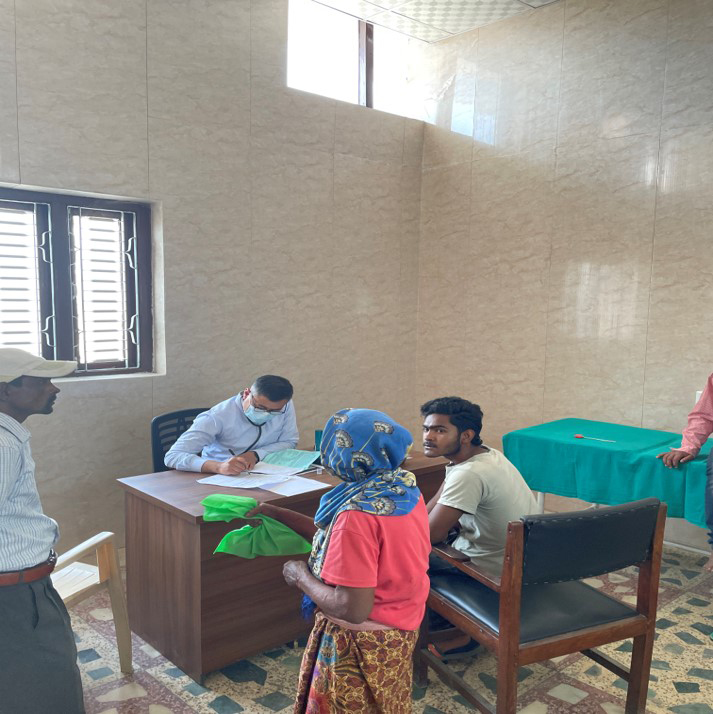
OPD Consultation

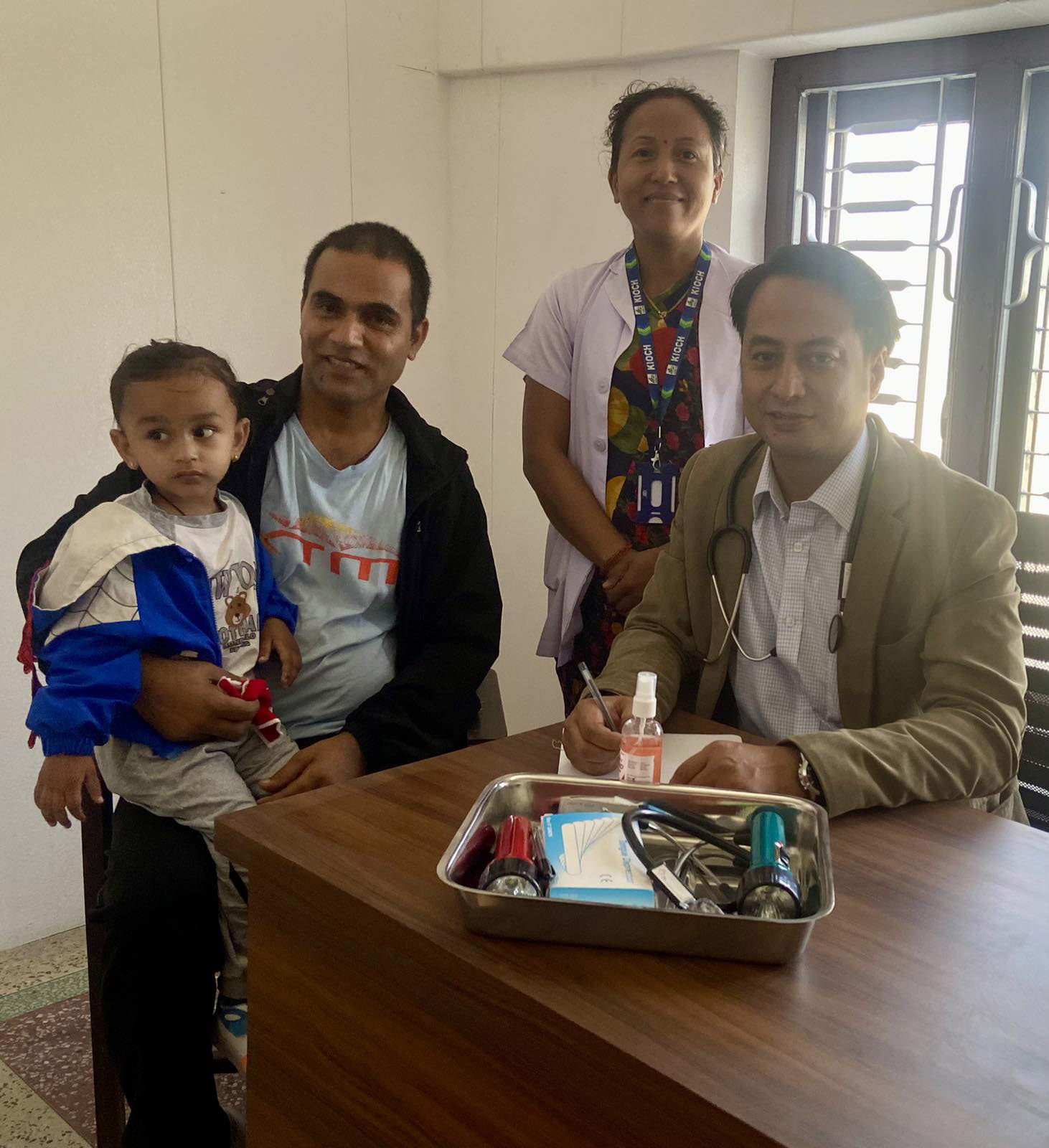
Chairman, Sr. Consultant Cardiac Surgeon Checking a child Medical Director check the first patient
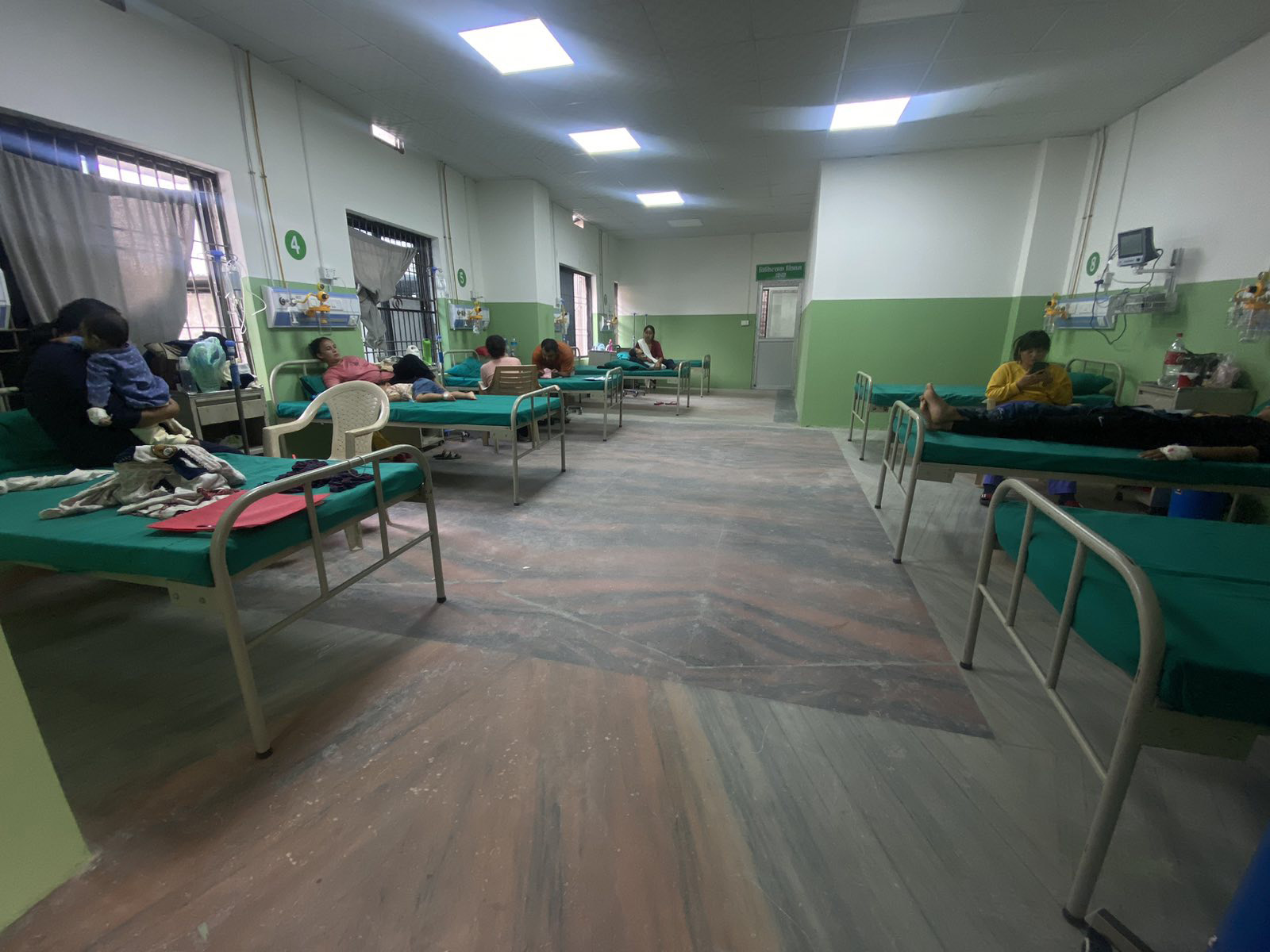
Patients under observation at KIOCH-Damak CHildren’s Hospital
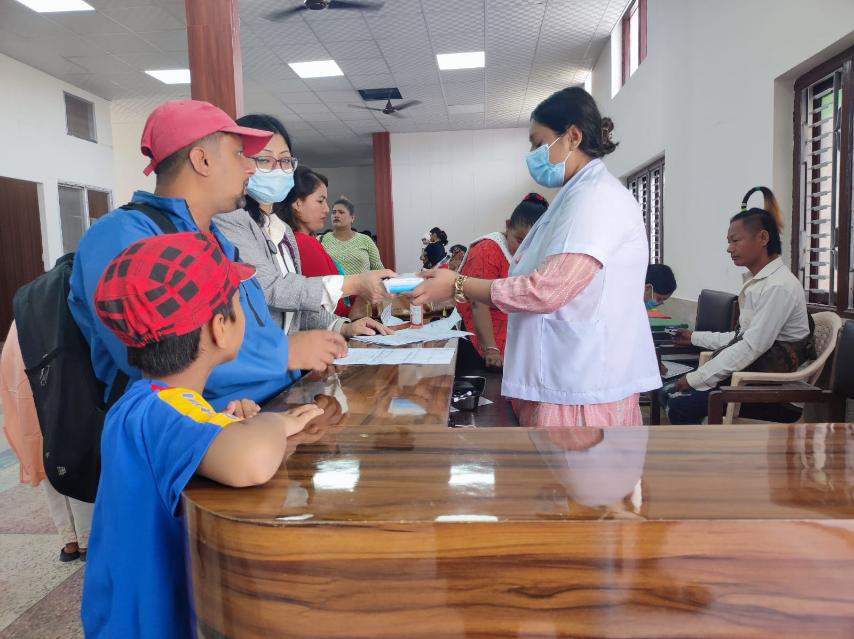
Service started from the KIOCH-Damak Children’s Hospital
